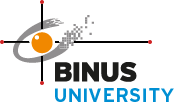ACCOUNTING INFORMATION SYSTEMS (4/2)
Learning Outcomes:
Define the difference between accounting information systems and real-time processing and the impact of these technologies on transaction processing, have a basic understanding of ethical issues related to the use of information technology; Identify the functional departments involved in revenue cycle activities and trace the flow of revenue transactions through the organization and be aware of the operational features and the control implications of technology used in payroll and fixed asset systems, operational features of the general ledger system(GLS), financial reporting system(FRS), and management reporting systems(MRS); Explain the role of accountants in the SDLC, with the tools used to improve the success of system construction and delivery activities, including prototyping, CASE tools, and the use of PERT and Ganttcharts; Design the business process using flowchart, data flow diagram, entity relationship diagram, database, query, form and report, the various aspects of ERP configuration including servers, database, and the use of bolt-on software, and be acquainted with the topologies that are employed to achieve connectivity across the internet.
Topics:
- The Information System: An Accountant’s Perspective;
- Introduction to Transaction Processing;
- The Revenue Cycle;
- The Expenditure Cycle Part I: Purchase and Cash Disbursements Procedures;
- The Expenditure Cycle Part II: Payroll Processing and Fixed Asset Procedures;
- The Conversion Cycle;
- Financial Reporting and Management Reporting Systems;
- Database Management Systems;
- The REA Approach to Database Modeling;
- Enterprise Resource Planning Systems;
- Electronic Commerce Systems;
- Managing the Systems Development Life Cycle;
- Construct, Deliver, and Maintain Systems Project
Published at :



SOCIAL MEDIA
Let’s relentlessly connected and get caught up each other.
Looking for tweets ...